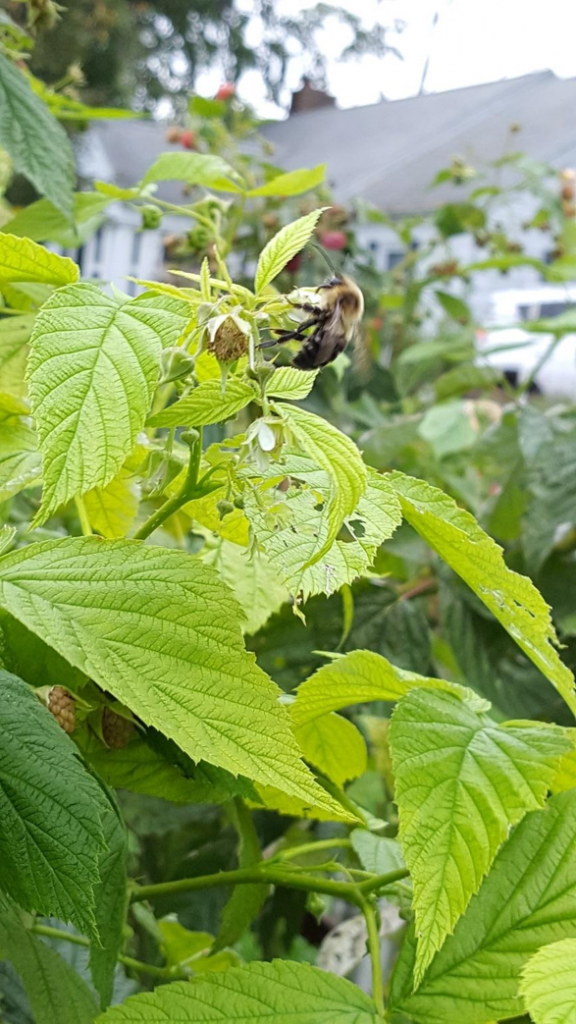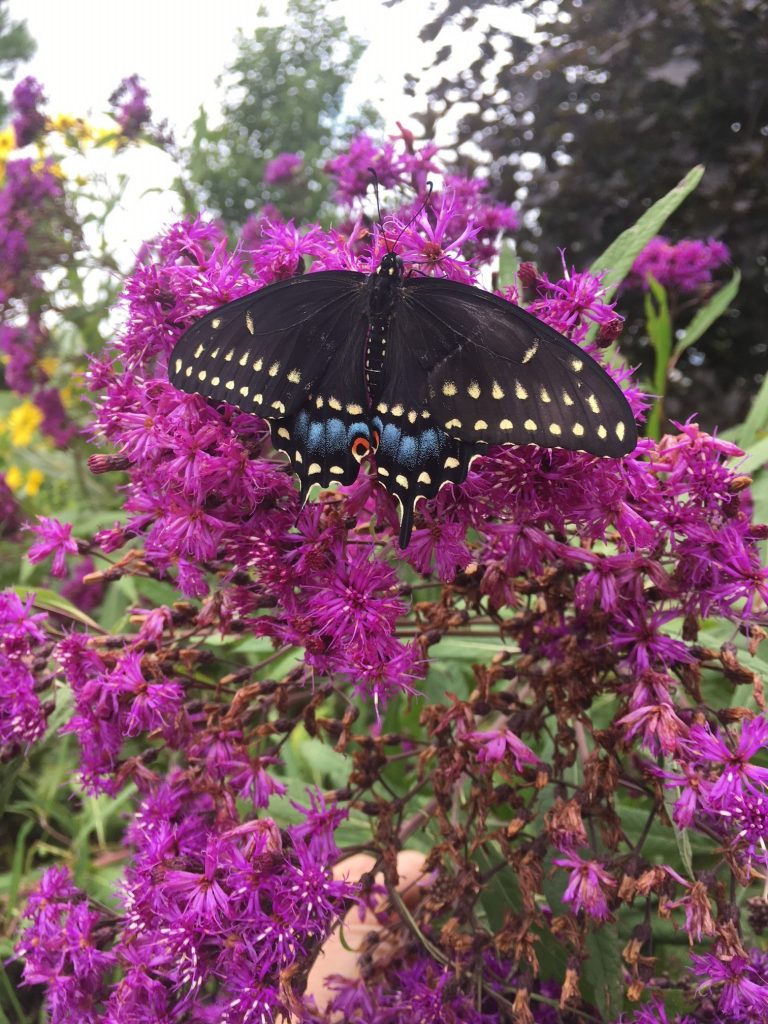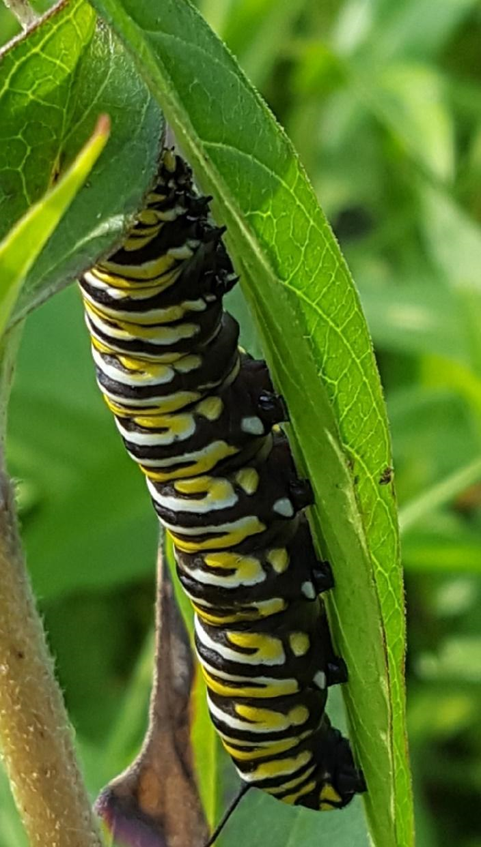We can thank pollinators for one out of every three bites of food we eat. About 35% of the world’s food crops and 75% of all flowering plants need pollinators to reproduce. Without pollinators, these plants would not survive, and neither would we!
Because pollinators co-evolved with their natural surroundings, native plants provide the best source of food for them, as well as nesting material, cover from predators, and protection from harsh weather. Your yard can provide essential habitat for pollinators like butterflies, hummingbirds, bees and other beneficial insects. By incorporating native plants in your yard, you can offer a safe haven for pollinators, and in turn you will be rewarded with a bounty of flowers, fruits, and seeds.
Bees
Bees pollinate many of our most important crops. Although the European honeybee is the most widely recognized bee, there are dozens of native bees that buzz around our yards, transferring pollen from flower to flower. Bumble, digger, leafcutter, mason, and sweat bees are a few of the hairy natives that crawl inside a flower, comb the anthers with their stiff hairs, and gather pollen. This labor-intensive job requires lots of energy. Flowers provide bees with a sugary energy drink called nectar, which helps to sustain them through the day. This sweet treat lures bees into flowers, ensuring pollination.

Butterflies and Moths

Butterflies bring joy to the garden with their brightly colored wings and graceful flight. They navigate through the yard in search of food, water, minerals, and a place to lay their eggs. Unlike bees, butterflies are unable to hover and need someplace to land while feeding. They are attracted to bright colors, including red and purple, and flower shapes that offer an ample-sized landing pad. Using a long, hollow tongue called a proboscis like a straw to suck up nectar, butterflies can reach into flowers. Pollen sticks to their legs, mouth parts, and wings, ready for transfer to the next flower.
Moths work the pollinator night shift. With little light to see their target, moths depend more on fragrance to find nectar. Flowers that offer strong, sweet nighttime scents and large amounts dilute nectar attract these important nocturnal pollinators. Like their butterfly relatives, moths use their proboscis to feed on nectar. Some species need a landing pad, while others can hover like a hummingbird when feeding.
Swallowtail photo courtesy of Jody Heaston
Beyond Bees and Butterflies
There are other insects that play an important role in pollination. Less specialized than some other pollinators, beetles and flies are well-adapted to pollinate a large variety of flowers, shrubs, and trees. These insects come in various shapes, sizes, and colors; many even mimic the color and design of bees. Some beetles and flies prefer strong scents, either fruity or fetid, and some prefer white or green colored flowers. Wasps are mostly known as insect feeders, but many species also eat nectar and pollen to meet their high energy needs, transferring pollen in the process.
Specific Eaters
Pollinators co-evolved with native plants and need them for food, shelter, and nesting sites. Many pollinators are “picky eaters,” attracted to the unique chemistry of certain native plant materials, and have evolved to lay their eggs only on specific native plants that provide the nutrients needed by their young. Non-native plants used in landscapes are often not as nutritious and sometimes are even inedible to pollinators. Besides being a preferred food source, native plants also provide pollinators with nesting material, cover from predators, and a safe place to escape the elements and to overwinter. Read more about other pollinators such as insects, hummingbirds and bats.

Pollinators in Trouble
Due to the loss of natural habitats and the widespread use of pesticides, bees, butterflies, and other pollinators are in trouble. Shrinking food sources as a result of habitat loss along the migration routes of Monarchs and other migrating butterflies are causing sharp declines in their populations. Non-migrating species which overwinter in Indiana also face a lack of food and habitat. Private landowners use pesticides, plant invasive species, and use fertilizers on our lawns, but what are all of these practices doing to our pollinators’ habitats and food supply? Homeowners need to actively consider and learn about the consequences of their decisions.
Whether you are a producer or landowner, you can learn about pollinators and what you can do to help at the NRCS pollinator website or check out Xerces Society for Invertebrate Conservation’s resources. Please see our Native Plants page for more information as well.